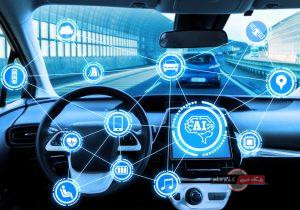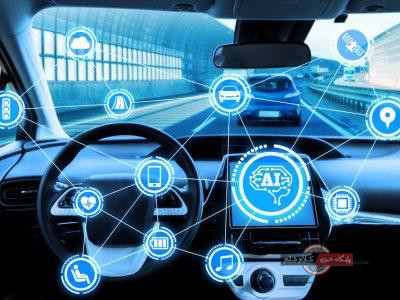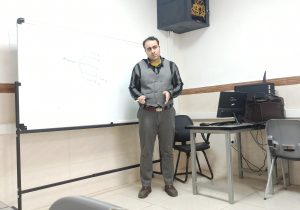به گزارش کلام قلم، ایمنی خودرو یکی از مهمترین دغدغههای صنعت خودروسازی در عصر حاضر است. با افزایش ترافیک و پیچیدگیهای جادهها، فناوریهای نوین بهویژه حسگرها و سیستمهای هوش مصنوعی، تحول عظیمی در زمینه ایمنی خودرو ایجاد کردهاند. این یادداشت به بررسی جامع عملکرد این فناوریها، مزایا و چالشهای موجود در مسیر توسعه آنها و […]
به گزارش کلام قلم، ایمنی خودرو یکی از مهمترین دغدغههای صنعت خودروسازی در عصر حاضر است. با افزایش ترافیک و پیچیدگیهای جادهها، فناوریهای نوین بهویژه حسگرها و سیستمهای هوش مصنوعی، تحول عظیمی در زمینه ایمنی خودرو ایجاد کردهاند. این یادداشت به بررسی جامع عملکرد این فناوریها، مزایا و چالشهای موجود در مسیر توسعه آنها و آینده ایمنی خودرو میپردازد.
حسگرها: چشمان خودرو
حسگرها عناصر کلیدی در سیستمهای ایمنی خودرو هستند که به شناسایی و پردازش اطلاعات ضروری از محیط اطراف میپردازند. این حسگرها در انواع مختلف و با کارکردهای متفاوت طراحی شدهاند. برخی از مهمترین حسگرها عبارتند از:
۱. حسگرهای فاصله:
– عملکرد: این حسگرها با استفاده از فناوری رادار یا لیزر، فاصله خودرو را با موانع یا خودروهای دیگر اندازهگیری میکنند.
– کاربرد: استفاده در سیستمهای پارک خودکار و هشدار به راننده در صورت نزدیک شدن به موانع.
۲. حسگرهای دوربین:
– عملکرد: دوربینهای نصبشده در خودرو به شناسایی علائم راه، عابران و موانع میپردازند.
– کاربرد: قابلیت تشخیص خطوط جاده برای نگهداشتن خودرو در مسیر و شناسایی شرایط جاده.
۳. حسگرهای حرارتی:
– عملکرد: این حسگرها به تشخیص دما و وضعیت جوی میپردازند.
– کاربرد: تشخیص یخزدگی و شرایط جوی نامساعد، هشدار به راننده برای احتیاط.
۴. حسگرهای وضعیت و شتاب:
– عملکرد: این حسگرها تغییرات در شتاب، سرعت و وضعیت خودرو را تشخیص میدهند.
– کاربرد: تشخیص تصادف و فعالسازی ایربگها در زمان مناسب.
۵. حسگرهای فشار تایر:
– عملکرد: این حسگرها بهمنظور نظارت بر فشار تایرها و تأمین سلامت آنها عمل میکنند.
– کاربرد: فراهمکردن هشدار در صورت تغییر فشار تایر، که میتواند به کاهش خطر تصادف کمک کند.
هوش مصنوعی: مغز هوشمند خودرو
با ورود هوش مصنوعی (AI) به صنعت خودرو، تحولی چشمگیر در ایمنی و عملکرد خودرو رخ داده است. هوش مصنوعی طی سالهای اخیر بهطور فزایندهای به کار گرفته شده است و میتواند از دادههای جمعآوریشده توسط حسگرها استفاده کرده و سیستمهای هوشمند را توسعه دهد. برخی از کارکردهای اصلی هوش مصنوعی در ایمنی خودرو عبارتند از:
۱. تشخیص و پیشبینی تصادفات:
– عملکرد: هوش مصنوعی از الگوریتمهای پیشرفته برای تجزیه و تحلیل دادهها و شناسایی الگوهای خطرناک استفاده میکند.
– کاربرد: این سیستمها قادر به شناسایی تغییرات ناگهانی در سرعت یا حرکت خودرو در شرایط خطرناک هستند و میتوانند به راننده هشدار دهند.
۲. خودروهای خودران:
– عملکرد: این خودروها بدون نیاز به دخالت انسان از لحاظ رانندگی عمل میکنند.
– کاربرد: ترکیب حسگرها و الگوریتمهای هوش مصنوعی به خودروها اجازه میدهد تا با دقت بالایی موانع را شناسایی کرده و خویش را در میان جادهها هدایت کنند.
۳. سیستمهای مدیریت هوشمند ترافیک:
– عملکرد: با تجزیه و تحلیل دادههای ترافیکی، AI میتواند نسبت به وضعیت ترافیک بهطور هوشمند واکنش نشان دهد.
– کاربرد: ارائه مسیرهای بهینه به رانندگان و کاهش ازدحام و تصادفات ناشی از ترافیک.
۴. بالا بردن راحتی و امنیت راننده:
– عملکرد: سیستمهای هوشمند میتوانند رفتار راننده را طی سفر تحلیل کرده و بهطور خودکار تنظیماتی را برای بهبود راحتی و ایمنی راننده انجام دهند.
– کاربرد: قابلیتهایی مانند تنظیم خودکار صندلی، دما و حتی انتخاب موسیقی براساس شرایط رانندگی.
مزایا و چالشها
فناوریهای نوین در قاعدهگذاری ایمنی خودرو، مزایا و چالشهایی را به همراه دارند که باید به دقت مورد بررسی قرار گیرند.
مزایا:
– کاهش تصادفات: با استفاده از حسگرها و سیستمهای هوش مصنوعی، بسیاری از تصادفات قابل پیشگیری هستند. گزارشها نشان میدهد که سیستمهای ایمنی اتوماتیک میتوانند خطر تصادفات را تا ۴۰ درصد کاهش دهند.
– بهبود تجربه رانندگی: راحتی و آسایش رانندگی با تکنولوژیهای مدرن افزایش یافته و رانندگان با اطمینان بیشتری سفر میکنند.
– افزایش بهرهوری انرژی: برخی از تکنولوژیها میتوانند باعث کاهش مصرف سوخت و در نتیجه کاهش تأثیرات منفی بر محیط زیست شوند.
چالشها:
– عدم اعتماد عمومی: بسیاری از افراد نسبت به خودروهای خودران و تصمیمگیریهای هوش مصنوعی بیاعتماد هستند و ترس از اشتباهات نرمافزاری مانع از پذیرش این فناوریها میشود.
– نیاز به زیرساختهای جدید: برای پیادهسازی کامل این فناوریها، به ایجاد زیرساختهای مناسب از جمله شبکههای ارتباطی قوی و مراکز داده نیاز است.
– مسائل حریم خصوصی: جمعآوری دادههای فراوان درباره رفتارهای رانندگی، نگرانیهایی را در زمینه حریم خصوصی و امنیت اطلاعات به همراه دارد.
نتیجهگیری
فناوریهای نوین در زمینه ایمنی خودرو، بهویژه حسگرها و هوش مصنوعی، انقلابی عمیق در صنعت خودرو ایجاد کرده است. با بهبود نه تنها در طراحی و کارکرد خودروها بلکه در دستیابی به سطوح بالاتر ایمنی، آیندهای روشن برای سفرهای ایمن و راحتتر پیش رو است. همکاری مداوم بین دولتها، شرکتهای خودروسازی و محققان میتواند به توسعه بهتر و سریعتر این فناوریها کمک کند و چالشهای موجود را برطرف نماید. با این دیدگاه، میتوان به سمت آیندهای پایدارتر و ایمنتر حرکت کرد، آیندهای که در آن تصادفات کمرنگتر و هر سفر، تجربهای امن خواهد بود.
به قلم: دکتر سید محمدرضا حسینی علی آباد – کارشناس و متخصص خودرو
The Role of Technology in Automotive Safety: From Sensors to Artificial Intelligence
Introduction
Automotive safety is one of the most significant concerns in the automobile industry today. With increasing traffic and road complexities, innovative technologies, especially sensors and artificial intelligence systems, have brought about a substantial transformation in vehicle safety. This paper offers a comprehensive examination of these technologies’ functionalities, their advantages, and the challenges encountered in their development, along with the future of automotive safety
Sensors: The Eyes of the Vehicle
Sensors are essential components in automotive safety systems, responsible for detecting and processing vital information from the surrounding environment. These sensors are designed in various types and with different functions. Some of the most important sensors include
Distance Sensors-
Function: These sensors measure the distance of the vehicle relative to obstacles or other vehicles using radar or laser technology
Application: Utilized in automatic parking systems and warning the driver when approaching obstacles
Camera Sensors-
Function: Cameras installed in the vehicle detect traffic signs, pedestrians, and obstacles
Application: Capable of recognizing lane markings to keep the vehicle on track and identifying road conditions
Thermal Sensors-
Function: These sensors detect temperature and weather conditions
Application: Identifying ice and adverse weather conditions, alerting the driver to exercise caution
Position and Acceleration Sensors-
Function: These sensors detect changes in acceleration, speed, and vehicle status
Application: Identifying collisions and triggering airbags at the appropriate time
Tire Pressure Sensors-
Function: These sensors monitor tire pressure to ensure their safety
Application: Providing alerts in case of tire pressure changes, helping to reduce the risk of accidents
Artificial Intelligence: The Intelligent Brain of the Vehicle
With the integration of artificial intelligence (AI) into the automotive industry, a remarkable shift in vehicle safety and performance has occurred. AI has been increasingly employed in recent years, utilizing data collected from sensors to develop intelligent systems. Some key functionalities of AI in automotive safety include
Accident Detection and Prediction-
Function: AI employs advanced algorithms to analyze data and identify hazardous patterns
Application: These systems can detect sudden changes in speed or vehicle movement in dangerous conditions and alert the driver
Autonomous Vehicles-
Function: These vehicles operate without human intervention in driving
Application: The combination of sensors and AI algorithms allows vehicles to accurately identify obstacles and navigate through roadways
Intelligent Traffic Management Systems
Function: By analyzing traffic data, AI can respond intelligently to traffic conditions
Application: Providing optimal routes to drivers and reducing congestion and accident risks caused by traffic
Enhancing Driver Comfort and Safety-
Function: Intelligent systems can analyze driver behavior during trips and automatically adjust settings to improve comfort and safety
Application: Features such as automatic seat adjustments, temperature controls, and even music selection based on driving conditions
Advantages and Challenges
Innovative technologies in automotive safety present both advantages and challenges that must be carefully considered
Advantages-
Reduced Accidents: The use of sensors and AI systems can prevent many accidents. Reports indicate that automatic safety systems can reduce the risk of collisions by up to 40%
Improved Driving Experience: Modern technologies enhance the comfort and ease of driving, allowing drivers to travel with greater confidence
Increased Energy Efficiency: Some technologies can reduce fuel consumption, thereby lessening negative environmental impacts
Challenges-
Public Distrust: Many individuals are skeptical about autonomous vehicles and AI decision-making; fears of software errors hinder the acceptance of these technologies
Need for New Infrastructure: Implementing these technologies fully requires the establishment of suitable infrastructure, including strong communication networks and data centers
Privacy Issues: The extensive collection of data regarding driving behaviors raises concerns about privacy and data security
Conclusion
New technologies in automotive safety, particularly sensors and artificial intelligence, have significantly revolutionized the automotive industry. With advancements not only in vehicle design and functionality but also in achieving higher safety levels, a promising future for safer and more comfortable travel lies ahead. Continuous collaboration between governments, automotive companies, and researchers can aid in better and faster development of these technologies, addressing existing challenges. This vision paves the way for a more sustainable and safer future, where accidents diminish, and every journey becomes a secure experience
By: Dr. Seyed MohammadReza Hosseini AliAbad





















